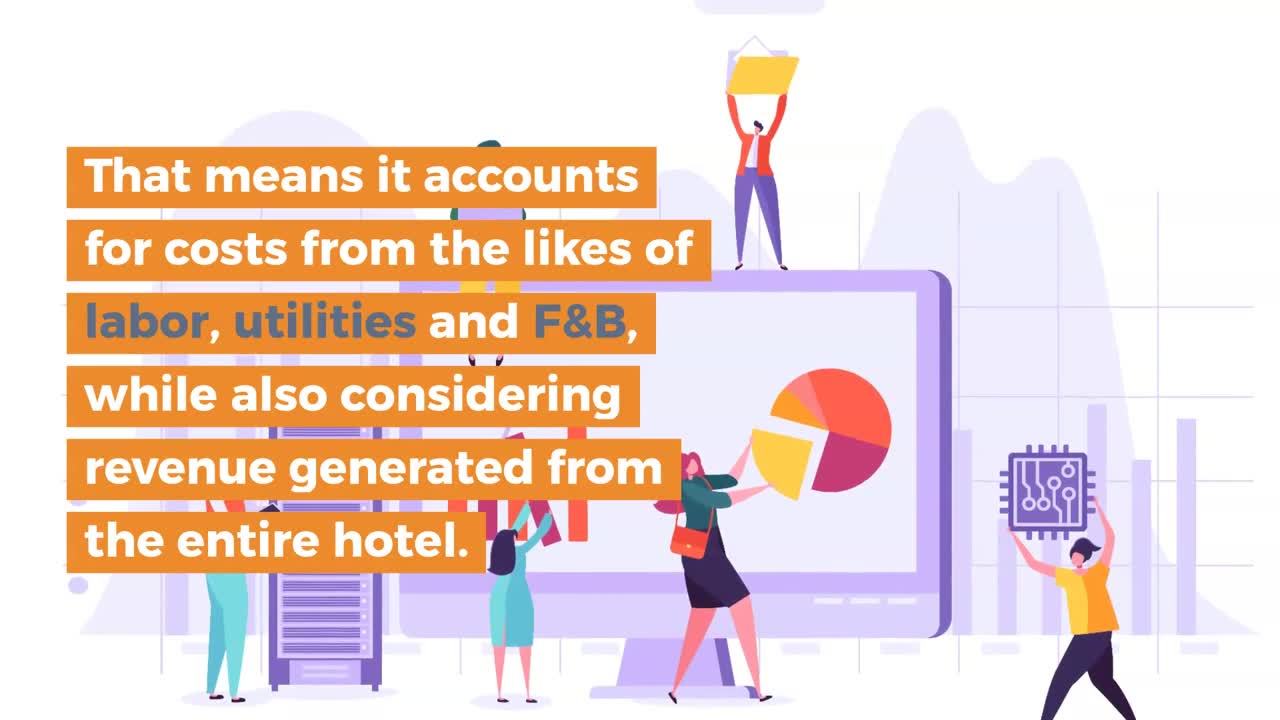What Is GOPPAR and Why Does It Matter?
The hotel industry has long been obsessed with revenue. But if you care about a hotel's operational health, relying on revenue alone only tells one chapter of the whole story.
Imagine walking into a doctor's office for your yearly checkup. She asks you to step on the scale and... you're done. The doctor marks down your weight, compares it to what your weight was the previous year, and sends you on your way.
That doesn't make much sense, does it?

Changes in your body weight may give the doctor clues, but they won't offer much insight into the true state of your health. And the same goes for a hotel's financial health. Instead of relying solely on revenue, it makes much more sense to focus on metrics that illustrate a hotel's complete picture—its operational profit.
Enter the hotel metric stethoscope: gross operating profit per available room (GOPPAR).
For hotels, this benchmarking metric bridges the gap between what your hotel really makes and how much money you're putting into operations. This means you can use it to build a more detailed hotel operational strategy.
Wondering what this metric is all about? Read on for a complete overview of GOPPAR and why it should be driving your hotel strategy.
What Is GOPPAR?
GOPPAR is a metric that gives you insight into how a hotel is performing. It measures operating profit and compares it to the total number of rooms that were available over a given period.
So although this popular figure accounts for revenue, it isn't the only focus. Instead, it shows you how revenue compares to a hotel's operational performance. That means it considers expenses like labor, F&B costs, as well as all incoming cash from the hotel's many moving pieces.
How GOPPAR Is Calculated
Wondering how to determine your gross operating profit per available room? First, you need to figure out the hotel or resort's gross operating profit. To do this, subtract operating expenses from gross revenue. From there, simply divide the hotel's gross operating profit by the total number of available rooms.
GOPPAR vs. RevPAR: What's the Difference?
GOPPAR and RevPAR (revenue per available room) both are measured against available rooms. However, there are some hefty differences between what the two metrics do and don't reveal.
RevPAR
RevPAR is a popular metric that considers a hotel's revenue per available room. It can give you a broad view of how much money a hotel or resort is bringing in from the selling of rooms but it doesn't provide much insight into a company's operational health.
GOPPAR
By contrast, GOPPAR helps an owner dive into exactly what's driving revenue catches and misses. It makes it possible to account for revenue sources that reach beyond just rooms. It considers sources like restaurants, bars, labor costs and other expenses.
Overall, RevPAR is a wide lake with shallow waters. It can give you a good sense of how much money is coming in, but without considering expenses, it can be relatively hollow compared to operational metrics like GOPPAR.
Why Is GOPPAR Important for Your Hotel Strategy?
Overall, why should hotel owners and operators track GOPPAR? Simply put, the metric gives you a fuller version of the story.
Think of a scenario wherein your hotel operational strategy focuses on revenue alone. Good news: The hotel has banked the same revenue for the past four years. Maybe revenue has even increased. However, what happens if labor costs have risen, like they did in 2017?
If the restaurant, bar and full operation hasn't accounted for increases in food and labor prices, that could be a cash black hole that's resulting in cumulative losses.
In the same scenario, if you're relying solely on revenue numbers, all indications would point to a positive future. Unfortunately, in this case, you would be left sitting idly by as your investment or hotel operation falls apart.
By contrast, GOPPAR gives you a deeper look into how well the hotel is operating. With that type of data in hand, you have the power to make adjustments, increase profits or rethink your investments.
Here are some specific instances in which GOPPAR comes in handy:
- Growth - Beyond the day-to-day operations, hotels in the middle of growth strategies should rely heavily on GOPPAR figures. That's because when you're growing, it usually means you're spending. Revenue-based figures might give you insight into what's coming in, but they miss the money that's going out the door. GOPPAR accounts for both, making it easier to focus on things like customer experience.
- Scaling Back - When markets slide or competition rises, successful hotels will trim the fat and improve efficiency, which requires that they go through the details of each expense line by line. GOPPAR makes it possible to see how savings in target areas are translating into profit.
- Delivering Higher Value - According to a recent Deloitte survey, 56% of guests who reported a positive hotel stay attributed this result to experiences that surprised them or exceeded expectations. For hotel managers who want to develop these additional delights, it means striking a profitable balance between revenue and expenses. GOPPAR is the baseline metric that reveals what does and doesn't pay off.
So, what is GOPPAR? At the end of the day, it's a key benchmarking metric that you can use to create and pick winners throughout the hotel industry. It's a solid statistic that highlights operations, inflow and outflow and overall profits. But most of all, it's a diagnostic tool that leaves you feeling confident about a hotel's true financial health.